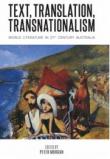Abstract
'One of the leading figures in world literature today is the Harvard scholar David Damrosch. His 2003 book What is World Literature ? has been widely influential, and might be said to have established the new, US-centred field of study known as world literature. In a 2010 review of three later books edited or co-edited by Damrosch—How to Read World Literature (2009), Teaching World Literature (2009) and The Longman Anthology of World Literature (2009)—John M. Kopper describes them as Damrosch’s aleph. The reference, which I take to be ironic, is to the title story of Jorge Luis Borges’s collection, The Aleph (1949). The aleph is a mysterious gadget that apparently allows the narrator, who is also named ‘Borges,’ briefly to experience an all-encompassing vision of the universe. It is a parable about the madness of desiring a total or ‘encyclopedic vision’ (Echevarria 125). To describe world literature as Damrosch’s aleph is to imply that it is fundamentally misguided to seek a total vision of literature or to read books at the scale of the world. ‘If the aleph stands for the totality of literature,’ Kopper writes, then today’s rich and expanding bibliography of works about that immensity, along with the increasingly massive anthologies that seek to encircle it, show that we have lost our fear of the unbounded object that we study’ (408). ' (Author's introduction)



